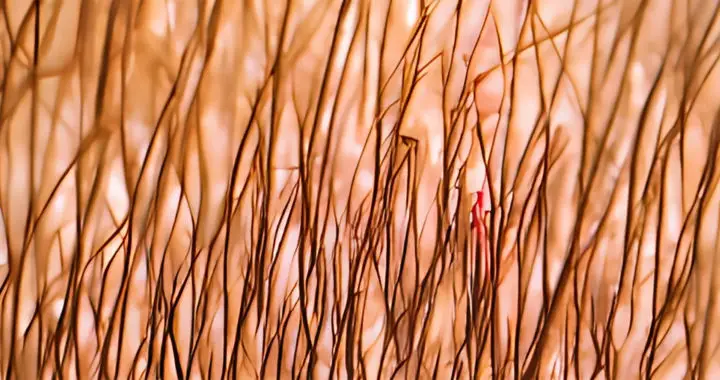Dihydrotestosterone or DHT is an androgen or natural sex hormone formed from testosterone through the action of the enzyme 5-alpha-reductase in selected tissues such as the prostate gland, seminal vesicles, skin, hair follicles, liver, and brain.
The presence of DHT is important for the sexual differentiation of the male genitalia during embryogenesis. It is also responsible for different developmental changes in men including the maturation of the penis and scrotum at puberty, the growth of facial, body, and public hair, and the development and maintenance of the prostate gland and seminal vesicles.
However, despite its importance, excessive levels of DHT have been linked to several problems such as benign prostate enlargement in men, and has been associated with polycystic ovary syndrome in women. It has also been linked to excessive hair loss.
Explaining the Link Between Excessive DHT Levels and Hair Loss: How Dihydrotestosterone Causes Alopecia
Dihydrotestosterone and Androgenetic Alopecia
There are different types of hair loss. There are also different causes. High levels of DHT have been associated with a specific type of hair loss called androgenetic alopecia or male pattern hair loss and female pattern hair loss. Below is a definitive rundown of the link between dihydrotestosterone levels and alopecia:
• DHT or dihydrotestosterone is the main androgen in the skin and hair follicles. Remember that this sex hormone is also produced in these tissues and sites from testosterone through the action of the enzyme 5-alpha-reductase.
• This hormone binds to the androgen receptors in hair follicles. Follicles have these receptors because the development and growth of hair are part of the sexual development process and the emergence of defining sexual characteristics.
• DHT is critical in the hair growth cycle. It promotes the anagen or growth phase of the cycle. However, when in excess, it can lead to the miniaturization of hair follicles leading to shorter and thinner hair and excessive hair loss.
• The role of dihydrotestosterone in the miniaturization of hair follicles is a complex process that involves different mechanisms. An excess level of this sex hormone essentially triggers different biological activities.
• One explanation for how DHT shrinks hair follicles is that its presence specifically decreases the size of the dermal papilla which is a niche responsible for providing the nutrients and oxygen needed for the development of hair follicle cells.
• This sex hormone also increases the production of transforming growth factor-beta 1. This protein is responsible for cell proliferation. It is critical in the hair growth cycle but it can also decrease the activity of hair follicle cells.
• Furthermore, due to how it shrinks follicles, DHT causes hair loss when in excess levels because it can trigger inflammation in the scalp which, in turn, can damage the hair follicles and contribute further to excessive hair loss.
Managing and Reducing Dihydrotestosterone Levels
Most individuals, particularly men, are susceptible to hair loss due to DHT because of genetics. Take note that androgenetic alopecia has both hormonal and genetic underpinning. Furthermore, some have follicles that are more sensitive to the effects of this sex hormone.
There are those who are less susceptible to androgenetic alopecia because they have low levels of 5-alpha-reductase. Remember that this enzyme is responsible for converting testosterone into dihydrotestosterone.
Nevertheless, because of the link between DHT and hair loss, most treatment options also include using so-called DHT blockers that work as inhibitors of the 5-alpha-reductase enzyme. Finasteride and dutasteride are the most commonly prescribed inhibitors.
There are also plant-based DHT blockers. Several studies have investigated the effects of extracts from saw palmetto, nettle root, and pumpkin seed in inhibiting 5-alpha-reductase or blocking the production of dihydrotestosterone.
Some hair loss treatment options do not target dihydrotestosterone but are focused on follicle health. Examples include the application of topical minoxidil and other topical solutions containing niacinamide and melatonin.
Minoxidil has been proven to promote hair growth among people with androgenetic alopecia because of its vasodilation effect. Niacinamide also improves hair growth by stimulating the production of the vascular endothelial growth factor.
FURTHER READINGS AND REFERENCES
- Chen, X., Liu, B., Li, Y., Han, L., Tang, X., Deng, W., Lai, W., and Wan, M. 2020. “Dihydrotestosterone Regulates Hair Growth Through the Wnt/β-Catenin Pathway in C57BL/6 Mice and In Vitro Organ Culture.” Frontiers in Pharmacology. 10. DOI: 3389/fphar.2019.01528
- Suchonwanit, P., Thammarucha, S., and Leerunyakul, K. 2019. “Minoxidil and Its Use in Hair Disorders: A Review.” Drug Design, Development, and Therapy. 13: 2777-2786. DOI: 2147/dddt.s214907
- Urysiak-Czubatka, I., Kmieć, M. L., and Broniarczyk-Dyła, G. 2014. “Assessment of the Usefulness of Dihydrotestosterone in the Diagnostics of Patients with Androgenetic Alopecia. Advances in Dermatology and Allergology. 4(207-215). DOI: 5114/pdia.2014.40925
- Ustuner, E. T. 2013. “Cause of Androgenic Alopecia.” Plastic and Reconstructive Surgery Global Open. 1(7): e64. DOI: 1097/gox.0000000000000005





